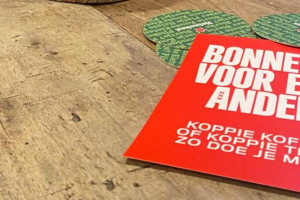From red light to spotlight in Amsterdam
Until recently, the only clothes for sale along the Oudezijds Achterburgwal canal in this city’s red-light district were of the black leather and silver studded variety. And the mannequins cavorting in the red windows couldn’t really be considered dressed at all.
Then, late last month, the city of Amsterdam handed the keys to a notorious chain of brothels to some of the country’s hottest young designers. And now, between the sex shops and kebab houses, are 18 elegant window displays featuring some of the best that Dutch fashion has to offer.
Redlight Fashion Amsterdam, as the initiative is called, has given 14 designers and two photographers the opportunity to work and live rent-free in the 17th-century buildings for one year.
”There was too much criminal activity in the area,” said Lodewijk Asscher, the deputy mayor, who initiated the project. ”We had tried numerous things to change it.”
When city officials acquired 20 buildings in the district from Charles Geerts, a local businessman who owned several brothels, the suggestion for Redlight Fashion came from Mariette Hoitink, founder of the local fashion agency HTNK.
”Fashion belongs to a modern economic infrastructure, and Amsterdam wants to have that, too,” said Asscher, who also is planning bookstores, cafés and galleries in the area. ”We want to retain the tolerant character and excitement of the red-light district but if behind the smiles of these ladies is abuse, we would rather lose it all tomorrow.”
A visit to the new ateliers early this month found that many still contained the ugly tiled beds and neon strip lighting favored by the former residents. ”It was as if everybody left in five minutes,” Hoitink said. ”We had three weeks between the go-ahead and handing out the keys.”
And the new inhabitants were still settling in.
Jan Taminiau, fresh from Haute Couture Week in Paris, had boxes and unpacked suitcases scattered around his new living room, which overlooks a window full of prostitutes.
”I’m not sure how it is going to affect me creatively,” said Taminiau, who is known for his romantic creations. ”I was thinking of offering them some dresses to wear until I realized they probably move all the time.”
Nor does Taminiau know how his clients are going to take the change. ”I’m very curious to see how they react,” he said. ”Clients usually need to come five or six times for fittings.”
Next door, Edwin Oudshoorn has been working day and night for the last three weeks to eradicate traces of the former tenants. He laid new flooring and taped pretty flowery paper to the walls. But his work desk sits over one of the tiled beds, and upstairs, another one is covered with pieces of broken mannequins.
”I didn’t want to be the designer in the little red room,” said Oudshoorn, who is designing the costumes for a production of the opera ”Don Giovanni” in The Hague. ”The first time I came here it was really a shock to see the mattress, the beds and shoes. I was cleaning it with my mother. We didn’t talk about what we saw, we just threw it away.”
The tiled beds will stay in the CODE Gallery Store, a boutique scheduled to open along the canal March 20. Clothes made by several of the new resident designers will be sold, along with other labels. The store is named for the hip Dutch magazine CODE, which will operate the business.
As for the local reaction to the new residents, ”The only things people say are, ‘Your lights are too bright,’ ” Oudshoorn said. ”People would watch women in red light. They now see dresses in white light.”
He is not the only one to have heard from the neighbors.
”A bouncer stopped me the other day and said, ‘How can you call yourself a fashion designer wearing sweat pants and proper shoes?’ It was quite funny,” said Bas Kosters, the ”bad boy” of Dutch fashion, who just moved in a few doors along.
An artist, designer, musician, DJ and dollmaker, Kosters said he felt perfectly at home in his new digs, which he painted bright yellow and blue. A young model was posing in one of his latest creations, a retro 1960s orange dress. Playful handbags and half-finished paintings were scattered around the messy work space.
”I have lived in squats and in schools, so I feel fine here,” Kosters said. ”It is quite exciting and inspiring in this neighborhood. There are lots of people to see.”
On display in Kosters’s upper window was his aptly named Red Light Collection, originally made for a March 2006 show. ”It is a story of the beauty of the homeless people and the creativity they worked with in their clothes,” he said of the colorful handmade pieces. ”How they tried to be beautiful in their own way.”
Further along the street, Mada van Gaans already was displaying some of her newest designs. She said her creations were inspired by the myths about female figures so she was looking forward to absorbing the legendary character of the district and reflecting it in her styles.
”If you are a woman working behind a red window, then you have to be strong,” she said. ”It’s like looking at a cartoon character with all of these perfect bodies. I think it will bring a dose of realism to my work.”



